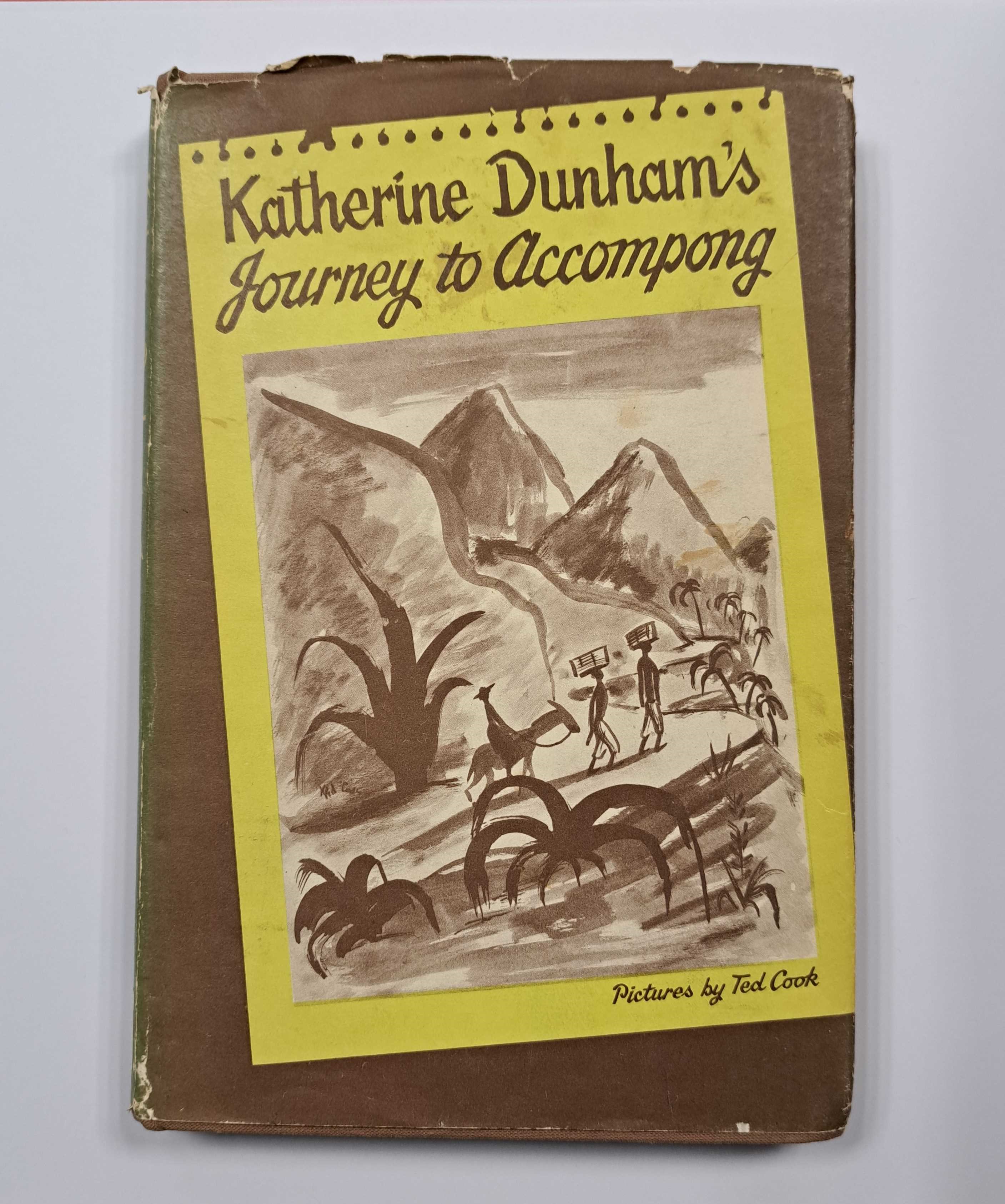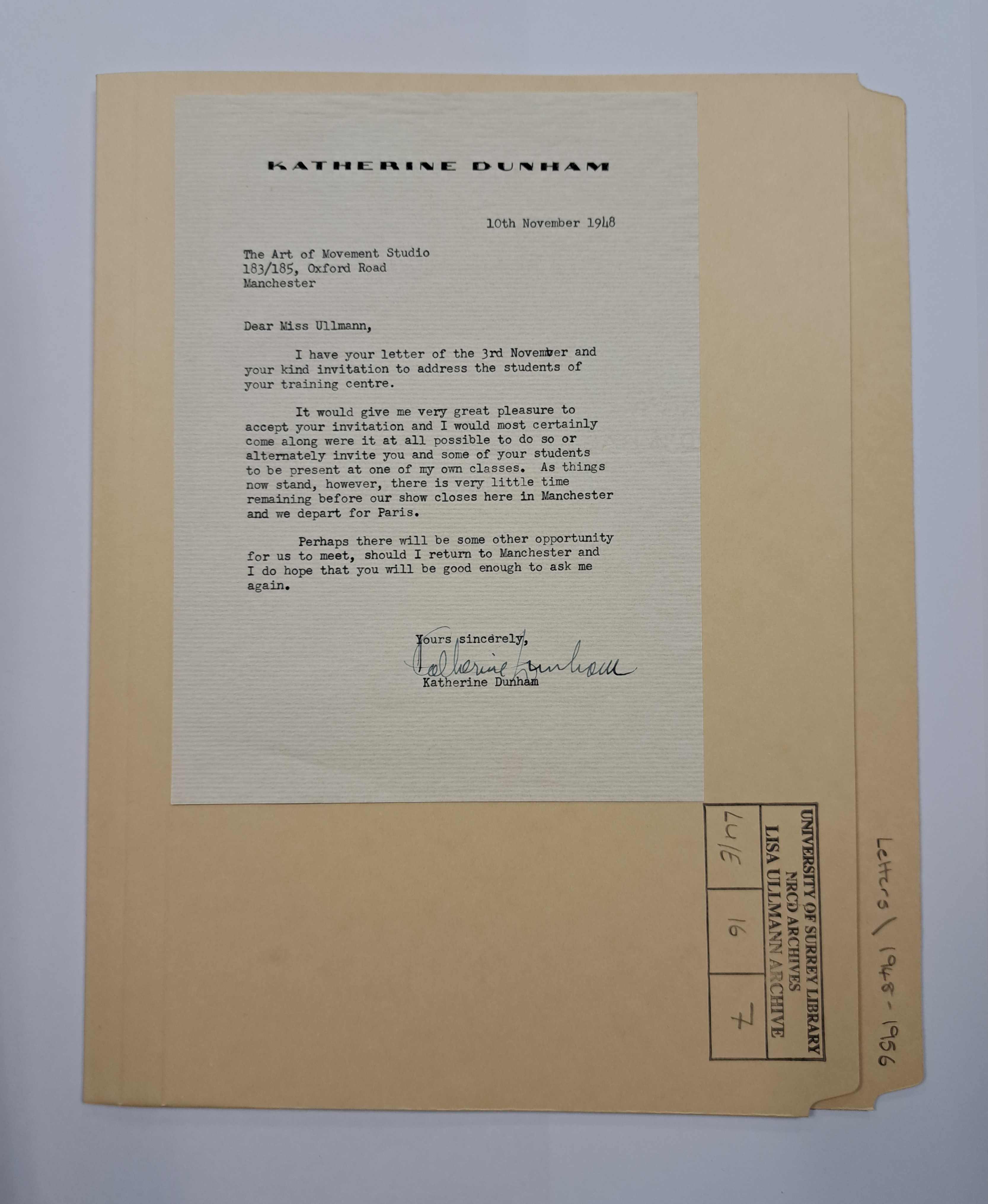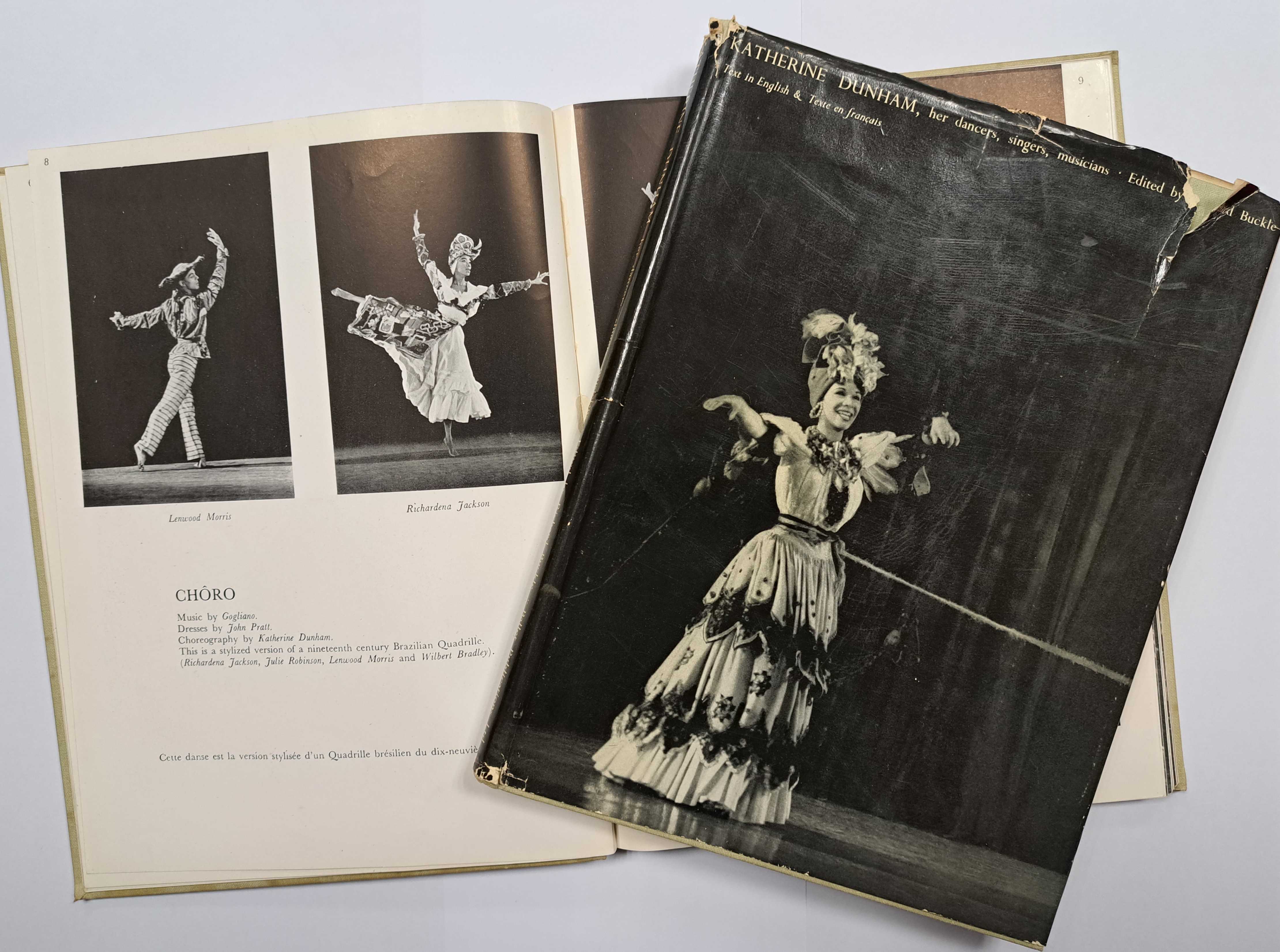One of the many privileges of working with archive collections is having the opportunity to trace the stories of the diverse individuals that feature in the records, especially when the impact and influence of their life can be found across the varied collections we hold.
For this year’s Black History Month, we are going to look at items from the archive that relate to the life and career of the dancer, choreographer, anthropologist, and social activist Katherine Dunham (1909-2006). Katherine, a pioneer of anthropological dance, was the creator of the Dunham Technique (a blend of ballet and modern dance with traditional dances from the African diaspora) which has greatly influenced American modern dance.
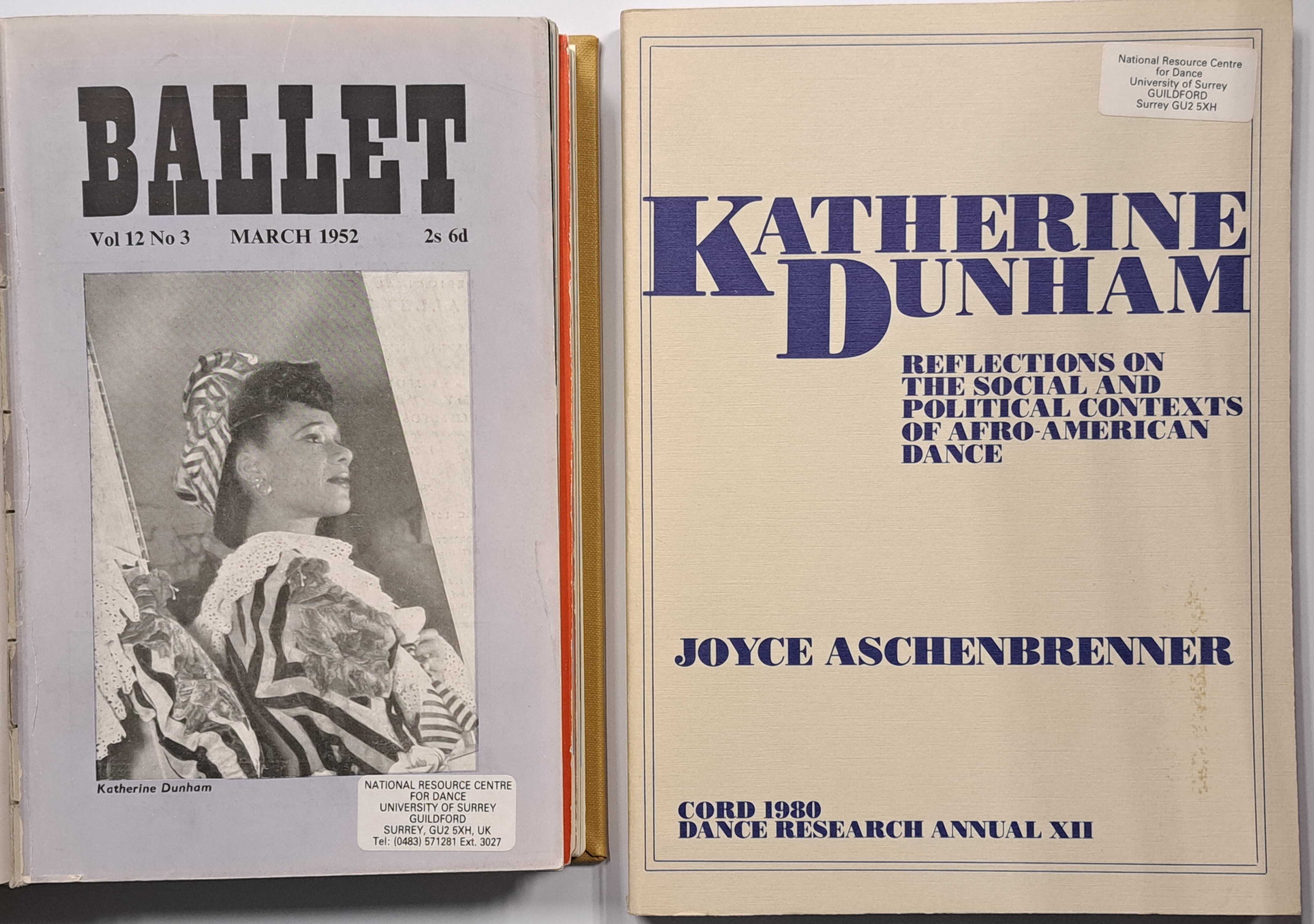
Right: ‘Katherine Dunham; Reflections on the social and political contexts of Afro-American Dance’ by Joyce Aschenbrenner from our core collection (XZB/2394)
Before we look at any of the archive items in more detail it is important to note that the terminology used in some of the material contains outdated language that is now regarded as derogatory and offensive.
We also need to reflect on how the use and meaning of certain words differs between countries and cultures. As Katherine was born, studied, and started her dance career in America we have looked to The National Archives of America to see how they navigate the nuances of changing terminology in the US. They have produced a comprehensive ‘Reparative Description Preferred Terms’ document to support the identification, evaluation and updating of potentially harmful and outdated language in archival descriptions https://www.archives.gov/research/catalog/lcdrg/appendix, and we have used this to help guide us in the writing of this blog.
In her writings Katherine often uses the term Negro and we have not modified or changed this term when it has been used by her. The documentation produced by The National Archives of America provides us with historical information regarding the changing context of the terms use:
‘During the early to mid-20th century, many Black Americans reclaimed the term as a preferred self-identifier, and many Black-led and Black-focused organizations incorporated it into their formal names. However, after the Black Power movement in the 1960s, the term fell out of favor and is now considered derogatory and offensive because of its associations with slavery, racism, and oppression against Black people’
In high school Katherine was a member of the Terpsichorean Club, where she was taught modern dance techniques that centred around the ideas and teachings of Emile Jaques-Dalcroze and Rudolf Laban. This is particularly fascinating for us as we hold the archives of both Rudolf Laban (a pioneering movement theorist) and the UK Dalcroze Society (who oversee the teaching of Dalcroze Eurhythmics, a method of teaching music through movement).
Katherine went on to study ballet with Ludmilla Speranzeva, one of the first ballet teachers to welcome Black dancers and in 1930 Katherine formed the dance company Ballet Négre, one of the first Black ballet companies in America. The company made its debut performance at the annual Beaux Arts Ball in Chicago, but a lack of other bookings resulted in the company disbanding.
In 1933 Katherine opened her first dance school, the Negro Dance Group, for young Black dancers. Following the advice of her ballet teacher Ludmilla Speranzeva, her teaching focused on modern dance rather than just classical ballet. The school also enable Katherine to teach students about their African heritage. In an article she wrote for the Dance Herald in 1938 she states:
‘Realizing that the amalgamation of the Negro into white America has in large measure brought about a complete lack of contact with those things which were racially his.’
Katherine’s interest in dance continued, and whilst studying anthropology at the University of Chicago she chose to focus on dances of the African diaspora. She received fellowships from the Rosenwald Foundation to undertake anthropological field trips to Jamaica, Martinique, Cuba, Trinidad and Haiti to research African-derived dances.
Katherine’s research and observations directly informed her choreography, not only recording and preserving the dance forms she had encountered but also challenging stereotypical views of African culture, and questioning the popular belief that African dance was exotic and primitive.
Katherine wrote a book about one of her anthropological expeditions titled ‘Katherine Dunham’s Journey to Accompong’, a personal day by day account in which she describes her experiences of the people and places she encountered,
In 1936 Katherine received a Ph.B. degree (Bachelor of Philosophy Degree) from the University of Chicago, majoring in social anthropology. She continued her anthropological research throughout her life.
After returning from her fieldwork expeditions, she established the Katherine Dunham Company, creating an extensive repertoire of performances showcasing her interpretation of dances from the African diaspora. Her company toured the world from 1938 to 1965.
In our Lisa Ullmann collection, we have a letter which offers us a glimpse of the Dance Company’s visit to Manchester in 1948. Lisa Ullmann (1907-1985) was a dancer and teacher who established the Art of Movement Studio with her partner, the pioneer movement theorist Rudolf Laban. Laban’s work would have been known to Katherine from her early training at the Terpsichorean Club she attended and through her academic interest in documenting dance movements.
In a letter from Katherine Dunham to Lisa Ullmann, Katherine politely turns down an invitation to speak to students attending The Art of Movement Studio due to her tour schedule and her imminent departure to Paris.
We also find an interest in the dances of Katherine Dunham in our Natural Movement archive (which focuses on a method of barefoot dance founded by Madge Atkinson). The book below is opened on the entry for the dance titled ‘Chôro’:
The cultural significance of Katherine’s work and life is not only demonstrated by the number of articles and references that can be found from a web search of her name but also in those dancers, performers, and choreographers she inspired. As a teenager the dancer, director, and choreographer Alvin Ailey first saw Katherine Dunham perform at the Biltmore Theater in Los Angeles and was mesmerised by her. Overtime Katherine and Alvin became friends, and she became an important influence on his work. in 1987 the Alvin Ailey Dance Theater reconstructs Katherine’s choreographies in ‘The Magic of Katherine Dunham’ performances. The works of both Katherine and Alvin communicate the beauty and cultural importance of Black dance.
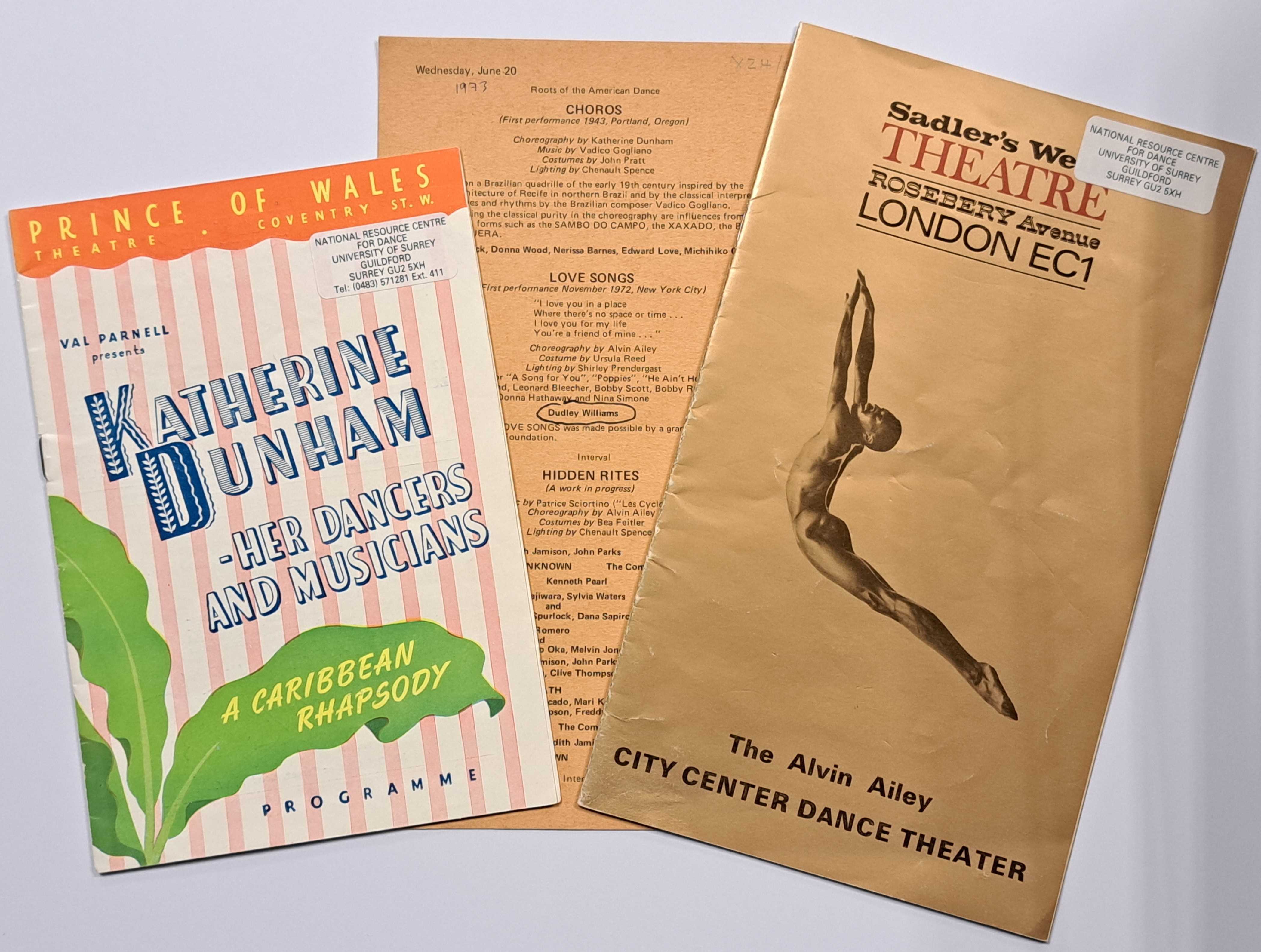
Right & Middle: ‘The Alvin Ailey City Centre Dance Theater’ at the Sadler’s Wells Theatre, 1973, featuring a performance of ‘Choros’ choreographed by Katherine Dunham.
Throughout her life Katherine fought for racial quality and spoke out against social injustice. As she became more well known, her celebrity inevitably meant that the press deemed her to be a representative of her race and gender. This led to criticism and debate as to whether she was representing African Americans in a positive way. Katherine had to try and balance the expectations placed on her with her artistic creativity.
As her fame grew it gave her a platform to campaign against racism and segregation. There are many reports of times she refused to perform or sign contracts where segregation was either enforced by law or by choice. In 1944 Katherine address the White audience at Memorial Auditorium in Louisville, Kentucky to speak out against segregation.
“It makes me very happy to know that you have liked us, that you have felt some of the beauty and happiness that we feel when we perform. But tonight our hearts are very sad because this is a farewell to Louisville. There comes a time when every human being must protest in order to retain human dignity. I must protest because I have discovered that your management will not allow people like you to sit next to people like us. I hope that time and the unhappiness of this war for tolerance and democracy, which I am sure we will win, will change some of these things. Perhaps then we can return.
Until the, God bless you – for you may need it”
We hope that this blog will encourage you to find out more about Katherine Dunham and her inspirational life.

